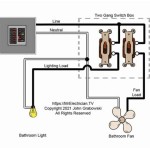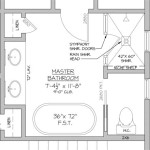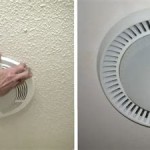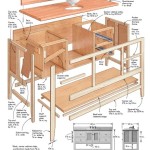Bathroom Sink Push Down Stopper Stuck: A Comprehensive Guide to Troubleshooting and Repair
The bathroom sink push-down stopper, also known as a pop-up drain, offers a convenient mechanism for controlling water flow. Its simple push-to-seal and push-to-release operation is generally reliable. However, a common issue encountered by homeowners is a stuck stopper, preventing proper drainage and potentially causing frustration. This article will detail the primary causes of a stuck push-down stopper, provide step-by-step instructions for diagnosis, and outline potential solutions ranging from simple cleaning to more involved repairs.
Understanding the mechanics of the push-down stopper is essential for effective troubleshooting. Unlike traditional lever-operated stoppers, the push-down variant relies on an internal spring-loaded mechanism. When pressed, the stopper engages a seal against the drain opening, preventing water from escaping. A subsequent press releases the seal, allowing water to drain. The internal components, including the spring, linkage, and sealing surface, are susceptible to debris accumulation and corrosion, leading to malfunctions.
Key Point 1: Identifying Common Causes of a Stuck Push-Down Stopper
Pinpointing the root cause is the first step in resolving a stuck stopper. Several factors can contribute to the problem, and a systematic approach to diagnosis is crucial.
Debris Accumulation: This is the most frequent culprit. Hair, soap scum, toothpaste residue, and other small particles can accumulate around the stopper’s sealing surface and within the drainpipe. Over time, this debris can solidify, creating a physical barrier that prevents the stopper from moving freely. The accumulation is often gradual, leading to a slow drain before the stopper becomes completely stuck.
Corrosion: Exposure to water and cleaning agents can lead to corrosion of the stopper's metal components, particularly the spring and linkage. Corrosion can cause the parts to seize, hindering the stopper's ability to move. The severity of corrosion depends on the water quality and the type of metal used in the stopper's construction. Cheaper stoppers made from less durable materials are more prone to corrosion.
Mineral Buildup: In areas with hard water, mineral deposits like calcium and magnesium can accumulate within the drainpipe and around the stopper. These deposits can harden and create a rigid blockade, effectively gluing the stopper in place. Mineral buildup is often visible as a white or chalky residue around the drain opening.
Mechanical Failure: Although less common, the internal mechanism of the stopper can fail. The spring may weaken or break, the linkage may become detached or bent, or the stopper itself may be damaged. Mechanical failures often require replacement of the entire stopper assembly.
Improper Installation: In some cases, a stuck stopper may be the result of improper installation. If the stopper assembly was not correctly aligned or tightened during installation, it may be prone to binding or sticking. This is particularly relevant if the stopper was recently installed or replaced.
Key Point 2: Step-by-Step Guide to Diagnosis and Initial Troubleshooting
Before resorting to drastic measures, attempt these troubleshooting steps to diagnose the problem and potentially resolve it without specialized tools or plumbing expertise.
Visual Inspection: Begin by carefully inspecting the stopper and the surrounding drain area. Look for visible signs of debris accumulation, corrosion, or mineral buildup. Note the position of the stopper – is it stuck in the open or closed position? Are there any obvious obstructions?
Gentle Manipulation: Attempt to gently push down and release the stopper several times. Observe if there is any movement or resistance. Avoid using excessive force, as this could further damage the mechanism. If the stopper moves slightly, try pouring hot (but not boiling) water down the drain to help dissolve any loose debris.
Manual Removal (If Possible): Some push-down stoppers can be manually removed by gently twisting and pulling upwards. If the stopper comes out easily, inspect it for debris and clean it thoroughly with a brush and mild detergent. Check the drain opening for obstructions as well. If the stopper is tightly stuck, do not force it, as this could break the stopper or damage the drainpipe.
Plunger Application: If the stopper is stuck in the closed position, try using a plunger to dislodge any debris. Ensure there is enough water in the sink to cover the cup of the plunger. Apply firm, consistent pressure with the plunger for several minutes. This may create enough suction to dislodge the obstruction.
Baking Soda and Vinegar Solution: This is a natural and effective way to dissolve minor blockages. Pour one cup of baking soda down the drain, followed by one cup of vinegar. Let the mixture fizz for about 30 minutes, then flush with hot water. This can help break down grease, soap scum, and other organic materials.
Key Point 3: Advanced Troubleshooting and Repair Techniques
If the initial troubleshooting steps are unsuccessful, more advanced techniques may be required. These methods often involve disassembling the drain assembly and may require basic plumbing skills and tools.
Removing the Drain Assembly: This involves disconnecting the drainpipe from the sink tailpiece. Place a bucket under the drain assembly to catch any water or debris. Use a wrench to loosen the slip nuts that connect the drainpipe to the sink. Once the nuts are loosened, carefully detach the drainpipe. This will provide access to the internal components of the stopper mechanism.
Inspecting and Cleaning the Stopper Mechanism: With the drain assembly removed, carefully inspect the stopper mechanism. Look for any signs of damage or corrosion. Clean all the components thoroughly with a brush and mild detergent. Pay particular attention to the spring, linkage, and sealing surface. Use a small brush or pipe cleaner to remove debris from hard-to-reach areas. A solvent like mineral spirits can be used to dissolve stubborn grease or soap scum.
Lubricating the Stopper Mechanism: After cleaning, lubricate the moving parts of the stopper mechanism with a silicone-based lubricant. This will help prevent corrosion and ensure smooth operation. Avoid using oil-based lubricants, as they can attract dirt and debris.
Removing Mineral Buildup: If mineral buildup is present, soak the affected components in a solution of vinegar or a commercial descaling product. This will help dissolve the mineral deposits. Use a stiff brush or scraper to remove any remaining residue. Be careful not to damage the components during the cleaning process.
Replacing the Stopper Assembly: If the stopper mechanism is severely damaged or corroded, it may be necessary to replace the entire assembly. New stopper assemblies are readily available at most hardware stores. When replacing the assembly, ensure that it is correctly aligned and tightened to prevent leaks. Follow the manufacturer's instructions for installation.
Calling a Plumber: If you are uncomfortable performing these advanced repair techniques, it is best to consult a qualified plumber. Attempting to repair the stopper mechanism without the necessary skills and tools could result in further damage or injury. A plumber can quickly diagnose the problem and provide a professional solution.
Regular maintenance is crucial for preventing future issues with the push-down stopper. Periodically flushing the drain with hot water and using a drain cleaner can help prevent debris accumulation. Avoid pouring grease or food scraps down the drain. Consider installing a hair catcher to prevent hair from entering the drainpipe. By following these preventative measures, homeowners can minimize the risk of a stuck push-down stopper and ensure proper drainage for years to come.

How To Fix Stuck Push Sink Waste Spring Drain Plug Bathroom

How To Fix Pop Up Drain Waste Plug

How Do I Fix A Stuck Push Down Sink Plug 4 Ways To Free Pop Up In 2024 Bathroom Drain Stopper
How To Get A Bathroom Sink Plug Removed When It Won T Un Quora

Quick Tip 26 Pop Up Stopper Sticks Misterfix It Com

The Pop Up Drain Stopper For My Sink Is Stuck Hunker

How To Fix A Bathroom Sink Stopper Step By Guide London Post

How To Fix Or Maintain Your Sink S Pop Up Mechanism
I Closed My Sink Drain Stopper And Now It Won T Open Again Is There Any Way That Can Repair This Without Hiring A Plumber Quora

What I Learned About Myself And A Stuck Pop Up Plug The Plumbette
Related Posts







